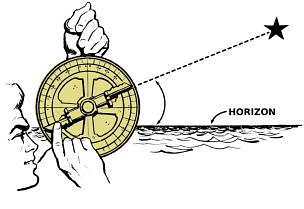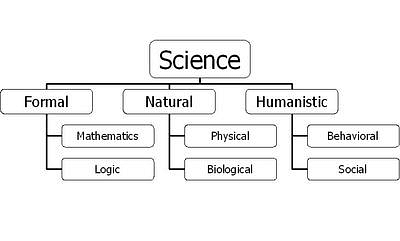Jasmine Grover Content Strategy Manager
Content Strategy Manager
Science is an outcome of curiosity. For a long time, humans have been watching, observing nature, and deducing how everything in this world works in a systematic manner. Various objects and structures are experimented upon and a set of rules is defined for the working of nature. There are many symmetries and orders found in nature that are recognized by science. Due to these observations and experimentations, homo sapiens have come out as the smartest species on the planet Earth. Our heart always beats at a constant rhythm, the sun rises in the east and sets in the west, these phenomena are simple to observe. Therefore, Science can be defined as knowledge of our environment and its behavior, found by experimenting and observing. In this article, we will understand how science evolved over time.
| Table of Content |
Science
Science is a practical and an intellectual activity that comprises a systematic study of the behavior and the structure of every physical natural object existing in nature. It is a phenomenon of experiment and observation. Science refers to the identification, identification, experimental investigation, and the theoretical explanation of various natural occurrences and phenomenon.

Read More: States of Matter
History of Science
The evolution of science refers to the development and the study of scientific knowledge in both social as well as natural sciences. Let us understand the evolution of science:
- The curiosity about the universe:
From very early days, people have been observing the seasonal changes and positional changes of the sun and stars. Many people around the globe were curious to know about our status in this big universe. In 4000 BC, the Mesopotamian people tried to explain our position by stating that our planet was at the center of the universe and other astronomical bodies were moving around it. Though it was later proved out to be false.

Nicolaus Copernicus found that earth was not in the center of the universe and gave the idea of a solar system where heavenly bodies rotate around a star. Kepler deduced the first-ever model of planetary motion during the 17th century. He found that the planets move in elliptical orbits with the sun at one of their foci. William Gilbert, who was keenly interested in electricity and magnetism, found that Earth itself behaves like a giant magnet.
Read More: Galaxies
- Science in Metallurgy
Astronomy was not the only thing in which people were interested. People eventually had an interest in metallurgy and learned to use iron instruments, which led to the starting of the iron age. People started processing chemicals and other metals by learning about their properties and developed tools which led to the development of science. All these things didn't happen in the blink of an eye but rather took decades to research including multiple failures in various experiments.

Science in metallurgy
- Science in medicine
When there was no medicine, people were mostly worried about feeling sick. They started grinding specific plants which cured sickness and healed wounds. It was all hit and trial when some plants showed positive results. Herbal medicines were becoming popular.
Fun fact: During earlier times, the serious and disabling human diseases were not treated as normal sickness but were thought to be a curse from God for a person’s wrong deeds.

Science in medicine
Galileo, Aristotle, Plato, Pythagoras are considered to be the pioneers of the development of science. All of them saw the world in a different way and developed some set of rules and conclusions which are now the fundamentals of modern science. It was the Greeks who first found out that we are all made up of small particles which could not be broken down into further smaller particles. Galileo invented the first telescope, which was a huge discovery at that time.
Read More:
Development in Science
Science is found to be a broad category that covers many areas of nature. Through constant developments and contributions, scientists have narrowed it to three main categories based on the subjects of study.
- Natural Science: The study of anything that relates to the physical world. The subjects under it are- Physics, Biology, Chemistry.
- Social Science: It is the study of people, society, and their behaviors. The various disciplines are psychology, sociology, history, geography, political science, etc.
- Formal Science: It is the study of formal languages like logic, mathematics, etc.

Classification of Science
India’s contribution to science
India has also played a major role in contributing to science.
- Zero, the number which represents emptiness, which helped mathematicians to write large numbers just by appending zeros to the right of the number, was found in India by Aryabhatta.
- The Wootz steel, one of the finest steel in the world, was forged in India.
- Plastic surgery was first performed in India.
- Ayurveda is the most effective way of treatment found in India.
Scientific Facts
- Human teeth are as strong as teeth of sharks
- If all the DNA in humans is uncoiled and put together, it would be about two times the diameter of our solar system.
- The Amazon Rainforests solely produce over 20% of the world’s oxygen.
- Venus is the only planet that revolves clockwise.
- Light from the sun takes 8 minutes and 19 seconds to travel to the Earth.
- The average human heart beats about 100000 (1 lakh) times in a day.
- Our brain contains about 100 billion nerve cells!
- Some metals are so reactive that they explode when in contact with water.
- Mars has lower gravity than earth.
- The weight of the clouds can be over a million pounds.
- Razor blades can be dissolved by our stomach.
- If all the empty spaces between our atoms is taken out, all the human race can fit inside the volume of a single sugar cube.
- The nearest star from Earth is 4.2 light-years away.
- About 75% of our brain is made up of water.
Read More:
Things to remember
- Science can be defined as a knowledge of our surroundings and its behavior under various conditions.
- Science is classified into 3 categories-
- Natural Science- the study of anything that relates to the physical world.
- Social Science- It is the study of people, society, and their behaviors.
- Formal Science- It is the study of formal languages like logic, mathematics, etc.
- Blaise Pascal, Christiaan Huygens, Pythagoras are pioneers of formal science.
- Galileo Galilei invented the first telescope.
- Copernicus discovered that our earth revolves around the sun.
- Zero was invented by Aryabhatta
- Different types of medicinal plants and their leaves were used to cure wounds and diseases in earlier times.
- During earlier times, the serious and disabling diseases were not treated as normal sickness but were thought to be a curse from God for the wrong deeds.
Sample Questions
Ques. Mention the scientists led to the development of Formal science. (1 mark)
Ans. Blaise Pascal, Huygens, Pythagoras are the mathematicians who laid the foundation of formal science.
Ques. Who is referred to as the “father of science”? (1 mark)
Ans. Aristotle is the father of Science. He contributed to it around the 4th century BC.
Ques. What are the important contributions of India for science? (3 marks)
Ans. India contributed to science in the following ways:
- Zero was invented by Aryabhatta which was very helpful for developing number theory.
- Plastic surgery was first performed in India.
- Ayurveda is also of Indian origins.
Ques. Write a short note on the history of science. (3 marks)
Ans. Science came into existence when planetary motion caught the attention of people in Europe. Scientists like Aristotle, Darwin have laid the foundation of science like the human evolution theory that gave the idea to farmers to perform selective breeding. Nicolas Copernicus found that the earth is not at the center of the universe and changed the perception of people. As the study furthered, many scientists contributed to science and developed what we call modern science now.
Ques. Mention the 3 branches of science and explain them in brief. (3 mark)
Ans. The three branches of science are-
- Physical Science- In this field, people study about all the physical objects and materials. The three major fields of physical science are- Physics, Chemistry, and biology
- Social Science- It is the field of study where the relationship between societies, human behavior, and their effect on society is studied. The various disciplines of social science are -Psychology, history, geography, law, politics, etc.
- Formal Science- It is a unique area of study where the formal languages like mathematics, logic, statistics, etc are used to explore the existing laws and rules.
Ques. Explain in brief about physical science and its disciplines. (3 marks)
Ans. Physical science is the field of science that includes the study of every physical object in the world. Physical science has three broad categories-
- Physics- It was founded in the mid 19th century by combining smaller disciplines like mechanics, optics, electricity, magnetism, etc.
- Chemistry- It is the study of the structure and behavior of various substances and what happens to them when they are mixed.
- Biology- It refers to the study of all living things.
Ques. Write a short note on the historical development of science. (5 marks)
Ans. Science is a systematic and practical study of the structure and behavior of objects in our surroundings through experimentation and observation. Since early times people have been curiously putting their efforts into learning and transferring their findings to others.
- Galileo Galilei was one of the first scientists in the 17th century, who is now known as the father of modern physics. He developed the first telescope which allowed them to look far in space.
- Nicolaus Copernicus found that earth was not in the center of the solar system, but it was one of the planets revolving around the sun.
- Later Kepler gave the laws of planetary motion in which he explained that the planets were revolving around the sun in an elliptical path and the sun was at one of its foci. All of these together led to the early development of science.
Read More:



Comments